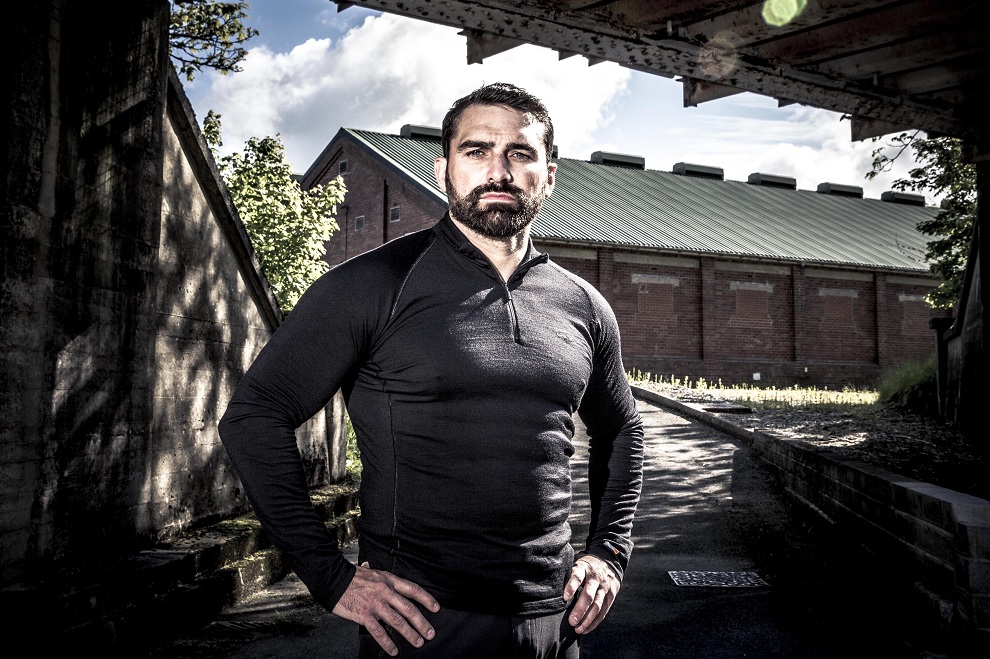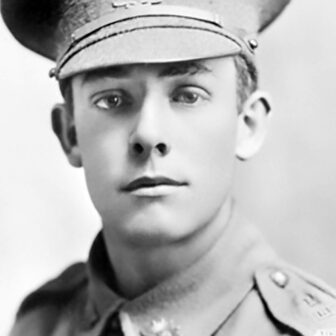Free-to-air programming is a game of categories. The typical prime-time blend is designed to provide changes of pace through the course of an evening: news and current affairs followed by lifestyle programs, then a drama series or a documentary, late-evening comedy, and a return to current affairs on the ABC. But there’s a random factor in the content, and unintended synchronicities sometimes occur.
On Monday night on SBS, the popular lifestyle series Dogs: Their Secret Lives, midway through its run, took on a whole new dimension when it was juxtaposed with the first episode of the new documentary series SAS: Who Dares Wins. A focus on dogs as complex individuals whose pathologies and idiosyncrasies require finely tuned interventions was followed by a portrayal of humans as pack animals, being barked at and put through fiercely punishing routines.
For years I was addicted to the National Geographic series The Dog Whisperer, presented by the charismatic Cesar Millan, whose mantra “exercise, discipline, affection” (strictly in that order) served me well in dealing with many of the more difficult humans I encountered in the workplace. Millan is, I’m sure, a difficult personality himself, but on camera he is a genius and his capacity to draw some of the most crazed dogs in America into a “calm submissive” nirvana is little short of superhuman. So dominant a presence has he been in dog TV that for years it was almost impossible for any other presenter to break through. Mark Evans, host of Dogs: Their Secret Lives, has managed to do it using the principle of antithesis.
Like Millan, he does his consulting through home visits, but where Millan arrives on the doorstep shoulders braced, head high, glowing with vitality and good cheer, Evans slides into the nearest seat and hunches over for some earnest dialogue with the dog owner.
As a former chief veterinary adviser to the RSPCA, Evans has dealt with a lot of worrying situations, most of which arise from misfired human–animal relations. Perhaps he is right to approach these situations with a seriousness that contrasts starkly with Millan’s blithe assumption that if you take a few common errors out of the mix, all will be well. Evans comes across as the kind of person who, if you were worried, would be worried with you, whether it was about the dog, the washing machine or your lost luggage.
Evans is fascinating to watch in his own way. His expressive face, with the mobile eyebrows, creased forehead and deep, green eyes, is a picture of empathic concern. In one of his more ambitious animal rescue efforts on another program, a crocodile gave him a kiss. Fortunately it was wearing a jaw strap at the time, but it left him with a badly split lip so that, in further empathy with his canine clients, he has to eat by tearing the food into chunks with the side of his mouth.
This week’s episode of Dogs: Their Secret Lives was about dogs suffering from mental health problems. We had Max the German shepherd, “an anxious dog with a number of issues,” the most serious of which was a habit of spinning out. Max had worn the lawn bare by turning in circles over it all day long. Then there was Roxy, a three-year-old Staffie with post-traumatic stress. She was attacked in the park as a puppy and won’t go out now, not even as far as the front gate. Biscuit, a bearded collie who was a lovely family pet, was prone to psychotic outbreaks at the sight or sound of a heavy vehicle. We saw her attempting to launch a flying attack at a double-decker bus, restrained on a leash by an owner who went in fear of her life every time they ventured onto the pavement.
The three patients were subjected to a process of expert diagnosis from Evans and his team of specialists. No miracle results were promised, but the remedies were prescribed with the most impressive consideration for the wellbeing of the dogs. They got to play games for treats, wrestle with plastic toys or race around an agility course while their humans looked on hopefully.
Humans are a weird species. In SAS: Who Dares Wins, the fun runs of the canine agility course were exchanged for a combat fitness course involving a forced march over a 3000-foot mountain peak in South Wales – and back again, with the clock ticking.
Ant, the chief instructor, addresses an assembly of thirty potential civilian recruits who have been driven to the remote military base like cattle, in the back of a truck. He singles out a victim immediately.
“Take ya fuckin’ cap off. Who do you think you are?” It’s a question that gets asked a lot on television these days, but for this guy, it’s strictly rhetorical.
Anybody who thinks they’re anybody will get into strife in this situation. The first exercise is to write a story about yourself on a piece of A4 paper. No preparation, no warm up. Just write it and drop it in the box. Everything you say will be held against you. Jon, a trainee stuntman with the looks of young Sylvester Stallone, makes the mistake of boasting about his strong-man credentials. “I don’t mean to say it arrogantly,” he announces to camera, “but I should squash everyone else.”
In the instructors’ meeting Jon’s A4 page is tossed across the table. “Fuckin’ show pony.” Mick, a thirty-five-year-old with a history of various addictions, fares a bit better, especially since he’s been developing a second life as a comedian. After making it through the most gruelling of the physical trials, Mick is called in for “TQ” (tactical questioning). This is ordeal by sarcasm, a mock-interrogation process for which candidates are brought in with a black bag over their heads. The bag is whipped away, and two inquisitors stare at Mick for some time before one says, “Gettin’ a bit twitchy?”
Mick doesn’t bat an eyelid. “I’m used to big audiences like this,” he says.
The script might have been written by an HBO team. Television viewers are all too familiar with scenes like these, but the reality is brought home in the physical trials. The recruits are kept awake for seventeen-hour stretches, sleeping for only three or four hours at a time, and are called up in some freezing predawn hour for the final marathon. As the camera pans up and back, they are seen crawling like ants along the trail through the ancient landscape.
A closer shot picks up the rearguard, toiling up the hill barely able to stay upright. “Horrendous,” one manages to say.
Failing to stay on your feet means total collapse. “I’m done,” says one guy as he hits the ground. Another is hyperventilating and has to be carted off by the medical team. In the final assessment, the team of instructors, themselves veterans of Afghanistan and Iraq, focus on the question of who would “have your back” in a combat zone.
What kind of species are we, to treat our companion animals with such depths of concern and give each other no quarter? SAS is certainly good television, but there are questions to be asked about how we watch this kind of trial by endurance. It taps into an ancient narrative about the one who wins through – the unlikely hero who has deep inner resources to draw on – and the failure of the obvious or self-appointed champion. But this isn’t a story. Those who break during the ordeals of the selection process may be the lucky ones. It’s those who go home years later, scarred for life by the horrors of war, whom we should be thinking of. They don’t figure in the mythos.
Nor do many others who find themselves playing a crucial role in the war zone. I finished my Monday evening’s viewing with the Lateline exclusive on an Iraqi asylum seeker known as “Khaled.” Khaled had worked along with his father as an interpreter for US forces in 2007, and according to his record of service he was “an invaluable asset to the team serving with honour and distinction.” That’s the kind of reputation all those aspiring SAS recruits would have had in their sights.
It was dangerous work. One night, Khaled’s father made the mistake of answering the door and was shot – thirteen times. He was dead on arrival at the hospital and, knowing his own life was now in immediate danger, Khaled fled the country. He made his way to Australia by boat, and was granted a temporary visa. But one night he was picked up by police in a carpark and peremptorily searched. Accused of using offensive language, resisting arrest and being in possession of a car without a licence, he was sent to Villawood detention centre, where he remained for the next eight months.
When his case was eventually heard, the charges were dismissed (though he admitted to having no driver’s licence). But under legislation brought in by the Rudd government, the charges alone were sufficient to warrant the cancellation of his visa.
The chapter of miseries continued. Khaled was suffering from post-traumatic stress and began self-medicating with ice. There were petitions on his behalf to minister Peter Dutton, who declined to intervene. Then, without any given reason, he was taken out for transfer to Christmas Island. In a fit of rage, he lashed out and smashed a surveillance camera. So there were more charges, and more extended delays awaiting a court hearing.
After two years in detention, Khaled signed an agreement for deportation back to Iraq, a document in which the Australian government disclaimed any responsibility for what might happen to him. The waiver clause, according to legal specialists, was highly unusual.
He was sent back to Basra, the very place where his father was shot, and presented with a bill for $20,000 for the costs. Speaking to Lateline on the phone, he stressed the acute danger he was in.
So who has Khaled’s back? It’s a somewhat urgent question. His narrative is not of the kind that draws would-be heroes to train for the SAS. It doesn’t fit with any stirring national mythos. You could say he’d been treated worse than a dog, but that would be a preposterous understatement. •




